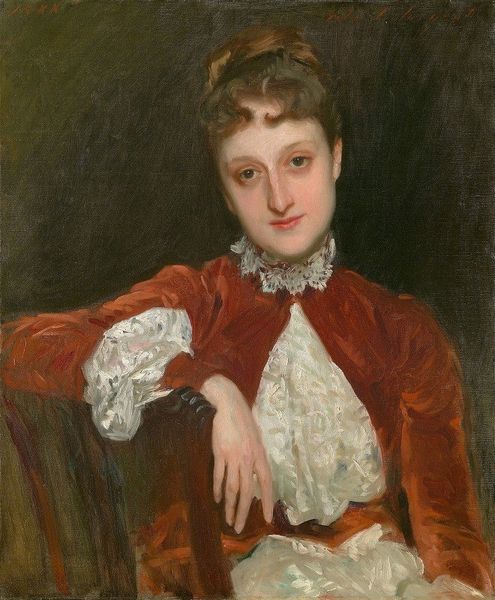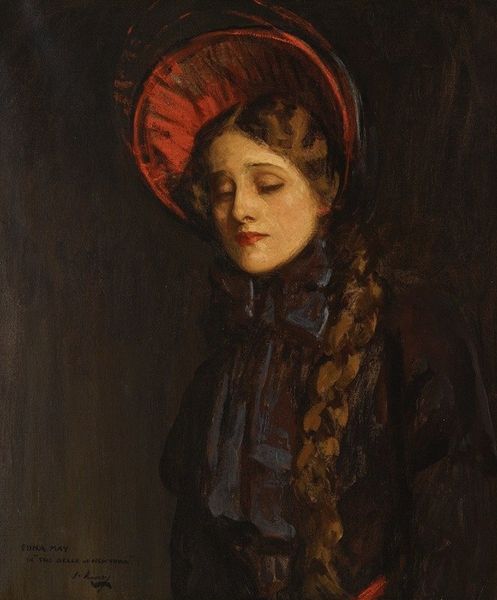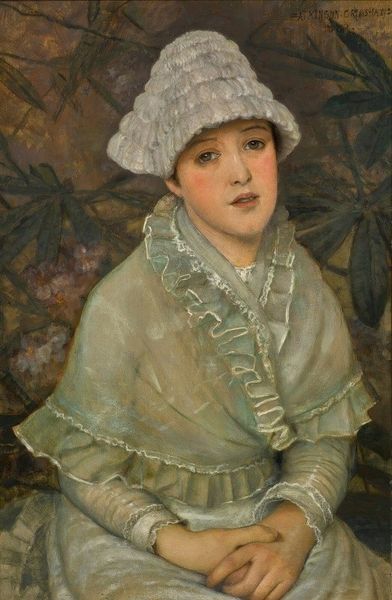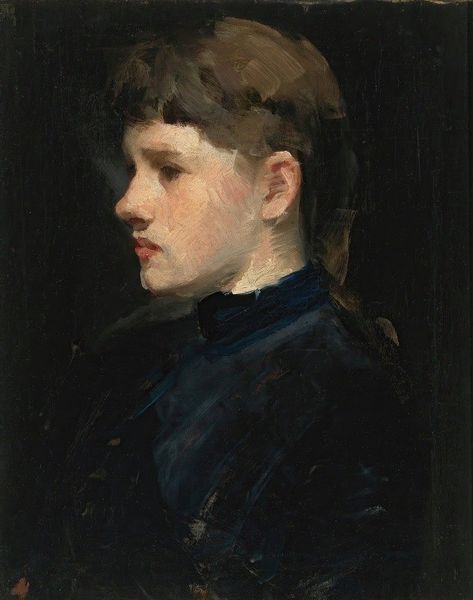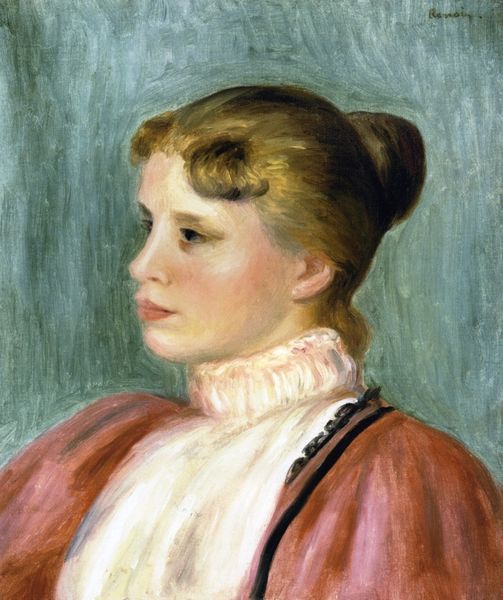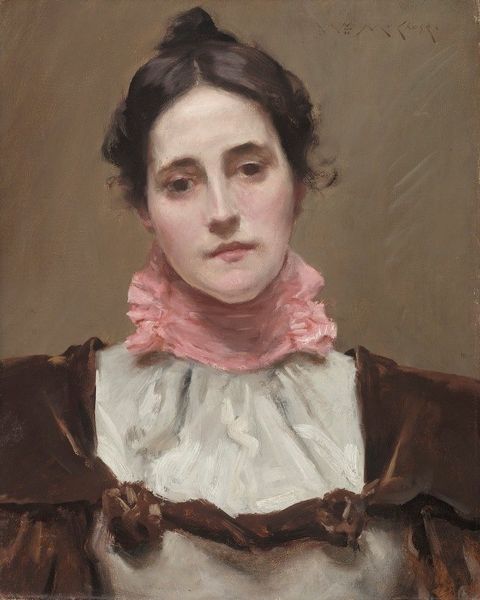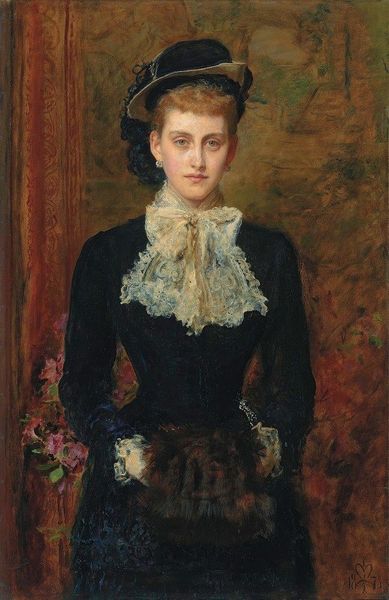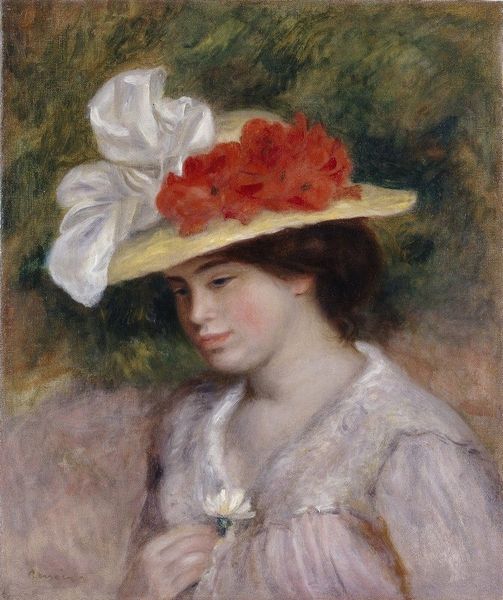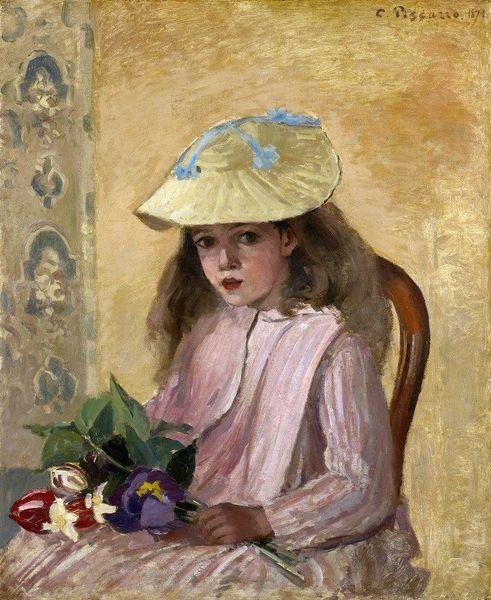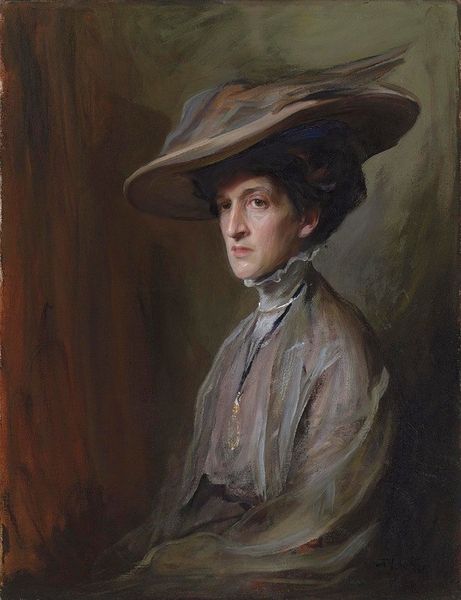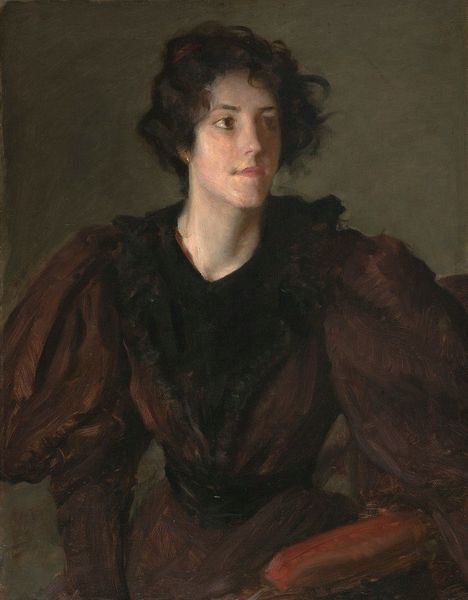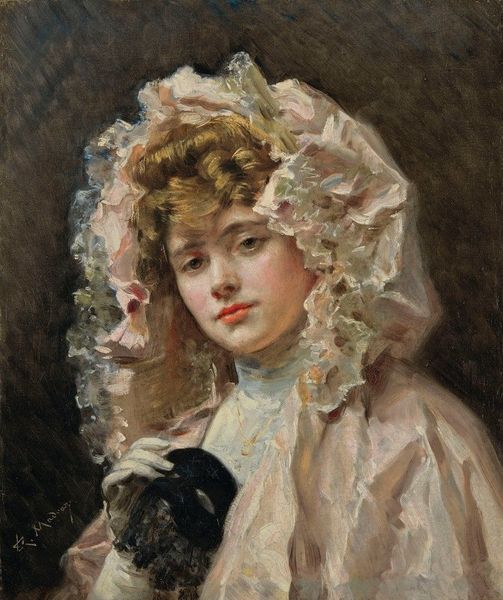
Copyright: Public Domain: Artvee
Jacques-Émile Blanche painted this portrait, La capeline rose, in the late nineteenth century. It depicts a young girl on a beach, adorned with a large pink bonnet and bow. Consider the implications of the girl’s clothing: her attire seems distinctly at odds with the beach setting. The bonnet and bow, combined with the dark, fur-like garment, signal formality and wealth. In France at this time, social class dictated every aspect of life, and the leisure activities of the wealthy often became public displays of their status. Coastal scenes were increasingly popular among impressionist painters who sought to capture leisure activities. Blanche, however, came from a family of doctors, and he remained on the periphery of impressionist circles. This work might be read as subtly critiquing the institutional structures of class. The girl's expression and attire might be seen as an ironic comment on the performance of upper-class identity. To fully appreciate this piece, one might explore historical fashion trends, and the social history of leisure in nineteenth-century France. The meaning of art is contingent on its social and institutional context.
Comments
No comments
Be the first to comment and join the conversation on the ultimate creative platform.
